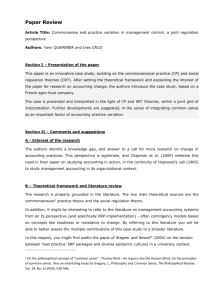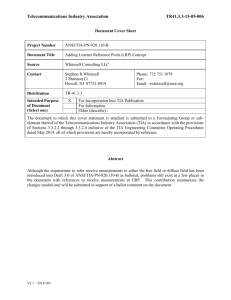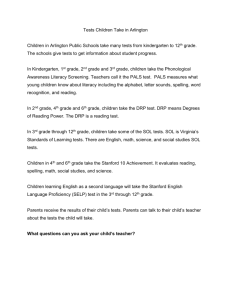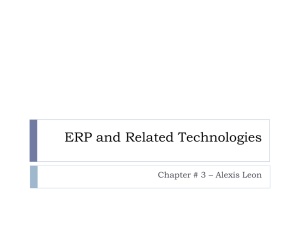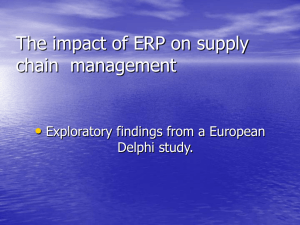TR41.7.1-11-02-002-L-Woo-AcousticSafetyProposal
advertisement
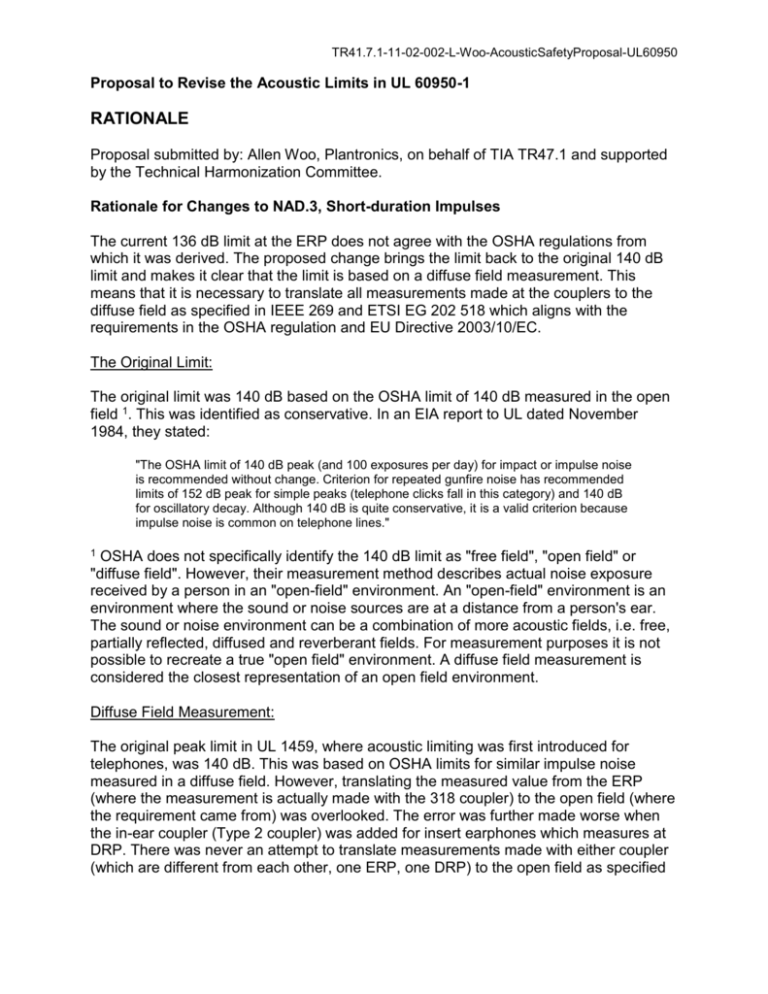
TR41.7.1-11-02-002-L-Woo-AcousticSafetyProposal-UL60950 Proposal to Revise the Acoustic Limits in UL 60950-1 RATIONALE Proposal submitted by: Allen Woo, Plantronics, on behalf of TIA TR47.1 and supported by the Technical Harmonization Committee. Rationale for Changes to NAD.3, Short-duration Impulses The current 136 dB limit at the ERP does not agree with the OSHA regulations from which it was derived. The proposed change brings the limit back to the original 140 dB limit and makes it clear that the limit is based on a diffuse field measurement. This means that it is necessary to translate all measurements made at the couplers to the diffuse field as specified in IEEE 269 and ETSI EG 202 518 which aligns with the requirements in the OSHA regulation and EU Directive 2003/10/EC. The Original Limit: The original limit was 140 dB based on the OSHA limit of 140 dB measured in the open field 1. This was identified as conservative. In an EIA report to UL dated November 1984, they stated: "The OSHA limit of 140 dB peak (and 100 exposures per day) for impact or impulse noise is recommended without change. Criterion for repeated gunfire noise has recommended limits of 152 dB peak for simple peaks (telephone clicks fall in this category) and 140 dB for oscillatory decay. Although 140 dB is quite conservative, it is a valid criterion because impulse noise is common on telephone lines." 1 OSHA does not specifically identify the 140 dB limit as "free field", "open field" or "diffuse field". However, their measurement method describes actual noise exposure received by a person in an "open-field" environment. An "open-field" environment is an environment where the sound or noise sources are at a distance from a person's ear. The sound or noise environment can be a combination of more acoustic fields, i.e. free, partially reflected, diffused and reverberant fields. For measurement purposes it is not possible to recreate a true "open field" environment. A diffuse field measurement is considered the closest representation of an open field environment. Diffuse Field Measurement: The original peak limit in UL 1459, where acoustic limiting was first introduced for telephones, was 140 dB. This was based on OSHA limits for similar impulse noise measured in a diffuse field. However, translating the measured value from the ERP (where the measurement is actually made with the 318 coupler) to the open field (where the requirement came from) was overlooked. The error was further made worse when the in-ear coupler (Type 2 coupler) was added for insert earphones which measures at DRP. There was never an attempt to translate measurements made with either coupler (which are different from each other, one ERP, one DRP) to the open field as specified TR41.7.1-11-02-002-L-Woo-AcousticSafetyProposal-UL60950 by the OSHA requirements. A translation to the diffuse field was never included as it should have been. See Figure NAD.2 and NAD.4 for the translations. The Change to 136 dB: In researching the change to 136 dB, TR41.7 found the following regarding when the change was made and why. In July 28, 1995, (more than 10 years after the original requirements were established) UL published a "Working Document for the Standard for Safety of Information Technology Equipment, Including Electrical Business Equipment; CSA C22.2 No. 950 * UL 1950 - Third Edition. In it under deviation No. 317 the original 140 dB limit was still included, with the source document coming from the TIA that were essentially the original UL 1459 requirements; 140 dB using the two different couplers. There was an associated note that stated: This deviation is contained in the IEC proposal mentioned in deviation No. 316. At the October 1993 meeting, it was decided to replace this deviation with the revised proposal being pursued through the IEC. See deviation No. 317a. Deviation No. 317a included the text from an IEC proposal on acoustic limiting that contained the 136 dB limit. It appears that the change was made to the proposed UL 1950 to try and harmonize with anticipated requirements for IEC 950. Even though the IEC never adopted acoustic requirements, the 136 dB stuck for UL 1950 and was later carried over to UL 60950. Regarding the current requirements in UL 60950-1 that do mention the ERP, since the original requirements in UL 1459, UL 1950 or UL 60950 did not mention open field, ERP or DRP, and the original reference ear coupler was the 318 (Type 1), it was natural to assume that the measurement and limit was at the ERP and this is what was included into the present UL 60950-1 requirement. The current ETSI (European Telecommunication Standard Institute) EG 202 518 sets the Peak Limit the same as the Directive 2003/10/EC at the equivalent diffused field: Peak Sound Pressure level (Ppeak) Exposure limits 140 dBSPL(C) Upper action values 137 dBSPL(C) Lower action values 135 dBSPL(C) "The noise exposures from handset and headset terminal equipments are different from the "open-field" environment. They are localized at or inside of users' ear... ... ... ... ... ...It is necessary to transfer the sound pressure level measured at the DRP to the "open-field" ... ... TR41.7.1-11-02-002-L-Woo-AcousticSafetyProposal-UL60950 It is recommended to use a real time filter to carry out the DRP to "open-field" head related transfer function (HRTF) translation. This is especially important for peak measurements as both magnitude and phase of the measurement must be best preserved in order to accurately evaluate the results. A minimum phase filter shall be used. The HRTF filter translation could be accomplished mathematically using a software algorithm to process digitally sampled and stored waveforms. It is the responsibility of the test house to ensure such methods accurately emulate the preferred real time filter method." Rationale for Changes to NAD.4, Long-duration Disturbances This proposal establishes the limit of 125 dB for handsets and 118 dB for headsets (e.g. over the ear, in-ear, insert earphones) with all measurement results referenced to ERP. This provides consistency no matter what type of coupler is used for the measurement. Original Requirements for Hand-Held Receivers The original limit established for UL 1459 was 125 dB for hand held receivers using the IEC 318 Coupler (Type 1) that measures at the ERP. Receiver Sound Level A. The maximum telephone receive level shall not exceed 125 dBA steady state with the telephone in any operating state or with a 1000 Hz signal of 10 volts rms or greater applied between the tip and ring terminals of the telephone. Response is measured using an IEC coupler for supra-aural earphones per ANSI S3.7-1973 with a type M microphone per ANSI S1.12-1967 (R1977). The sound pressure within the artificial ear is measured with a sound level meter set to use an Aweighted slow response. Steady state is defined as an acoustic response having a duration of 500 milliseconds or longer. This criterion is based on the assumption that the telephone receiver will not be held against the ear for longer than 2 seconds under these conditions. See the document "841015 EIA Receiver Sound Level.pdf" from October 1984. [Note from the STP Project Manager: To view this document, click on the magnifying glass icon next to "Supporting Documentation" under the Quick View menu on the right side of the screen in the CSDS Work Area. Then click on the magnifying glass icon for this document in the popup window to open the file.] Original Requirements for Headsets and Earphones: From the December 14, 1987 UL 1459 Meeting report on revised requirements: TR41.7.1-11-02-002-L-Woo-AcousticSafetyProposal-UL60950 Headsets and earphones should have greater limiting because of the higher usage associated with these devices. A level of 118 dBA is based on the capability of headsets that have been used successfully for many years. Since the ear canal produces about 3 dB of amplification, an earphone producing 121 dBA creates the same sound pressure on the eardrum as a headset at 118 dBA. Therefore, headsets and earphones have effectively the same criterion. This added 118 dB for headsets based on a longer than 2 second exposure since it takes a user longer to remove a headset than to pull a handset away in the event of a loud noise. This was still measured using the IEC 318 (Type 1) coupler that measures at the ERP. It also added a limit of 121 dB for insert earphones which was derived at the time from the 118 dB ERP limit translated to a measurement made with an insert earpiece coupler at the drum reference point (DRP). Using a single coupler (Type 3.3 from IEEE 269) for on-ear and insert ear couplers invalidates the different requirements for insert ear pieces and on-ear headsets when all of the measurements are referenced back to the ERP. Although different couplers are still allowed where appropriate, IEEE 269 instructs that all of the measurements, regardless of the coupler used, should be referenced back to the ERP. The original limit for measurements taken at the ERP is 118 dB. Although the difference in the requirements for handsets and headsets (based on time of exposure) remain valid, because of the variations of headphones, earpieces, etc, it is also no longer valid or practical to base the requirements themselves on the type of earpiece or coupler used. PROPOSAL Note: All of Annex NAD is a D2 national difference. However, underlining to indicate text added to IEC 60950-1 is not used in this annex. Proposed changes are indicated with (NEW) and (CURRENT) and (PROPOSED) headings. (NEW) NAD.1.2 Definitions NAD.1.2.13.20 DIFFUSE FIELD: A sound field with a high number of reflections that, at any given point in the diffuse field, sound arrives from all angles in a uniform manner. (CURRENT) NAD.3 Short-duration impulses The peak acoustic pressure measured at the earpiece or receiver of the communications handset or headset shall be limited to reduce the risk of permanent TR41.7.1-11-02-002-L-Woo-AcousticSafetyProposal-UL60950 hearing damage due to short-duration impulses ( 0,5 s) that can occur under normal operation. In addition, the equipment also shall be checked for self-generated acoustic impulses such as those produced by operation of the hook switch or by dialing. Compliance is checked by following the methods described in NAD.3.1 or NAD.3.2. During the above tests, the peak acoustic pressure level measured in the artificial ear or coupler shall not exceed 136 dB (relative to 20 µPa) at ear reference point (ERP). (PROPOSED) NAD.3 Short-duration impulses The peak sound pressure level (SPL) of short duration impulses (< 0.5 s) from an earpiece or receiver of a communication handset or headset shall not exceed an equivalent diffuse field SPL of 140 dB; relative to: 20 µPa. Compliance is checked by the measurement methods described in NAD.3.1 or NAD.3.2. The methods utilize artificial ears for testing. Artificial ears measure SPL at eardrum reference point (DRP) or ear reference point (ERP) depends on the type of the artificial ear. If either the DRP or ERP measured SPLs are below the 140 dB limit, compliance can be assumed. NOTE 1 Compliance can be assumed because a measured equivalent diffuse field SPL by nature of it being an open field measurement is always lower than a measured DRP or ERP SPL. If either the DRP or ERP measured SPLs exceed the 140 dB limit, the measured SPL shall be translated to the equivalent diffuse field and compared to the limit again. Appropriate correction factors in Table NAD.1 or Table NAD.2 shall be used for the translation, e.g. SPL(diffuse field) = SPL(DRP) + SDDff (correction factor for DRP to diffuse field) or SPL(diffuse field) = SPL(ERP) + SEDff (correction factor for ERP to diffuse field). It is recommended to apply the corrections with a real time (minimum phase) filter. NOTE 2 The correction outputs from the filter should be as close as possible to the appropriate graph in Figure NAD.2. The test setup is illustrated in Figure NAD.3. Alternatively, although not recommended, the DRP or ERP translations to the diffuse field may be accomplished mathematically using a software algorithm to process digitally sampled and stored waveforms. If this method is used, the method shall accurately emulate the preferred real time filter method. TR41.7.1-11-02-002-L-Woo-AcousticSafetyProposal-UL60950 NOTE 3 A given amplitude response can in theory be produced by an infinite set of filters, each of which creates a different phase response. A phase response that is a non-linear function of frequency smears the response in time. The filter that produces the amplitude response with the least time-smearing is the minimum phase filter of the set. Most simple equalizers are minimum phase filters. NOTE 4 For equalizers (e.g. programmable digital equalizer) with broader frequency bandwidth than the given correction factors’ frequency bandwidth in Tables NAD.1 and NAD.2, the setting of the equalizer at outside of the correction factors’ bandwidth should be 12 dB per 1/3 Octave attenuation. For example, if the highest frequency for the ERP to Diffuse Field correction factor is 8 kHz (0.9 dB), the setting at the next 1/3 frequency, 10 kHz, should be -11.1 dB. Table NAD.1 - Correction factors to convert DRP SPL to diffuse field SPL Frequency, Hz SDDff Frequency, Hz SDDff 100 0.0 1250 -5.5 125 0.0 1600 -7.5 160 -0.0 2000 -11.0 200 -0.0 2500 -14.0 250 -0.0 3150 -14.5 315 -0.5 4000 -13.5 400 -1.0 5000 -11.5 500 -1.5 6300 -10.0 630 -2.5 8000 -11.0 800 -3.5 10 000 -11.0 1000 -4.0 NOTE 6 SDDff The correction from DRP to Diffuse Field SDDff = 20 log10(PDff/PD) Where: PDff is SPL at diffuse field PD is SPL at DRP Table NAD.2 - Correction factors to convert ERP SPL to diffuse field SPL Frequency, Hz SEDff Frequency, Hz SEDff 100 0.0 1000 -2.5 125 0.0 1250 -3.0 160 0.0 1600 -3.5 200 -0.0 2000 -4.5 TR41.7.1-11-02-002-L-Woo-AcousticSafetyProposal-UL60950 250 -0.0 2500 -4.5 315 -0.5 3150 -4.0 400 -0.5 4000 -7.0 500 -1.0 5000 -8.5 630 -1.5 6300 -7.0 800 -2.0 8000 0.5 NOTE 7 SEDff The correction from ERP to Diffuse Field SEDff = 20 log10(PDff/PE) Where: PDff is SPL at diffuse field PE is SPL at ERP TR41.7.1-11-02-002-L-Woo-AcousticSafetyProposal-UL60950 Figure NAD.2 - Corrections to Convert DRP and ERP Sound Pressures to Diffuse Field Sound Pressure TR41.7.1-11-02-002-L-Woo-AcousticSafetyProposal-UL60950 Figure NAD.3 - Test setup TR41.7.1-11-02-002-L-Woo-AcousticSafetyProposal-UL60950 (CURRENT) NAD.4 Long-duration disturbances The maximum steady-state A-weighted sound pressure measured at the ear simulator for the communications handset or headset shall be limited to reduce the risk of permanent hearing damage due to long-duration disturbances (> 0,5 s) that can occur under normal operation. The equipment shall also be checked for self-generated acoustic disturbances, such as tone dialing signals fed back to the receiver and paging signals sent to a cordless handset. NOTE Typical signals considered are alerting (ringing) signals during the on-hook operating condition; and tone-type dialing, network signals and other similar signals generated within the device that can cause excessive acoustic output during the off-hook operating condition. Compliance is checked by following methods specified in NAD.4.1 or NAD.4.2. During the above tests, the maximum steady-state A-weighted sound pressure coming from the earpiece or receiver shall not exceed 125 dBA for handsets, 118 dBA for headsets, and 121 dBA for insert earphones. (PROPOSED) NAD.4 Long-duration disturbances The maximum steady-state, long-duration disturbances ( 0.5 s) A-weighted sound pressure level (SPL) from an earpiece or receiver of a communications handset or headset shall not exceed 125 dBA for handset and 118 dBA for headset at ERP (ear reference point). NOTE 1 Typical signals considered are alerting (ringing) signals during the on-hook operating condition; and tone-type dialing, network signals and other similar signals generated within the device that can cause excessive acoustic output during the off-hook operating condition. Compliance is checked by the measurement methods specified in NAD.4.1 or NAD.4.2. The methods utilize artificial ears for testing. Artificial ears measure SPL at DRP (eardrum reference point) or ERP (ear reference point) depends on the type of the artificial ear. If the DRP measured SPL is below the above limits (125 dBA for handset and 118 dBA for headset), compliance can be assumed. NOTE 2 Compliance can be assumed because a measured equivalent diffuse field SPL by nature of it being an open field measurement is always lower than a measured DRP or ERP SPL. If the DRP measured SPL exceed the above limits, the DRP measured SPL shall be translated to an equivalent ERP SPL and compared to the limits again. The correction TR41.7.1-11-02-002-L-Woo-AcousticSafetyProposal-UL60950 factors in Table NAD.3 shall be used for the translation, e.g. SPL(ERP) = SPL(DRP) + SDE(correction factor for DRP to ERP). It is recommended to apply the corrections with a real time (minimum phase) filter. NOTE 3 The correction outputs from the filter should be as close as to the graph in Figure NAD.4. The test setup is illustrated in Figure NAD.3 Alternatively, although not recommended, the DRP to ERP filter translation may be accomplished mathematically. If this method is used, the method shall accurately emulate the preferred real time filter method. NOTE 4 A given amplitude response can in theory be produced by an infinite set of filters, each of which creates a different phase response. A phase response that is a non-linear function of frequency smears the response in time. The filter that produces the amplitude response with the least time-smearing is the minimum phase filter of the set. Most simple equalizers are minimum phase filters. NOTE 5 For equalizers (e.g. programmable digital equalizer) with broader frequency bandwidth than the given correction factors’ frequency bandwidth in Table NAD.3, the setting of the equalizer at outside of the correction factors’ bandwidth should be 12 dB per 1/3 Octave attenuation. For example, if the highest frequency for the DRP to ERP factor is 10 kHz (-14.4 dB), the setting at the next 1/3 frequency, 12.5 kHz, should be -26.4 dB. Table NAD.3 - Correction factors to convert DRP SPL to ERP SPL Frequency, Hz SDE Frequency, Hz SDE 100 0.0 1250 -2.5 125 0.0 1600 -4.0 160 0.0 2000 -6.5 200 0.0 2500 -9.0 250 -0.0 3150 -10.0 315 -0.0 4000 -6.5 400 -0.5 5000 -3.0 500 -0.5 6300 -3.0 630 -0.5 8000 -16.0 800 -1.0 10 000 -14.0 1000 -1.5 NOTE 7 SDE The correction from ERP to DRP TR41.7.1-11-02-002-L-Woo-AcousticSafetyProposal-UL60950 SDE = 20 log10(PE/PD) Where: PE is SPL at ERP PD is SPL at DRP TR41.7.1-11-02-002-L-Woo-AcousticSafetyProposal-UL60950 Figure NAD.4 - Corrections to Convert DRP Sound Pressures to ERP Sound Pressure



